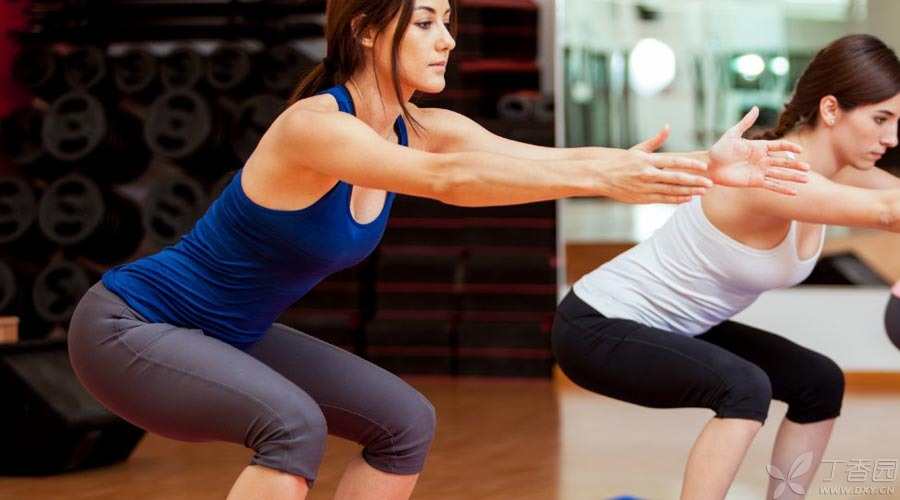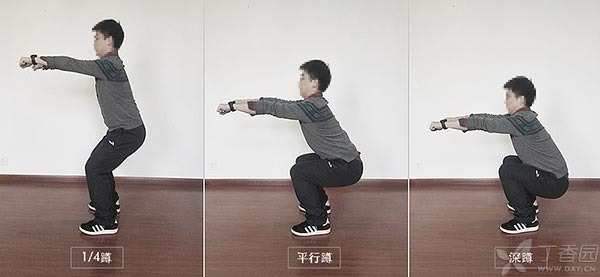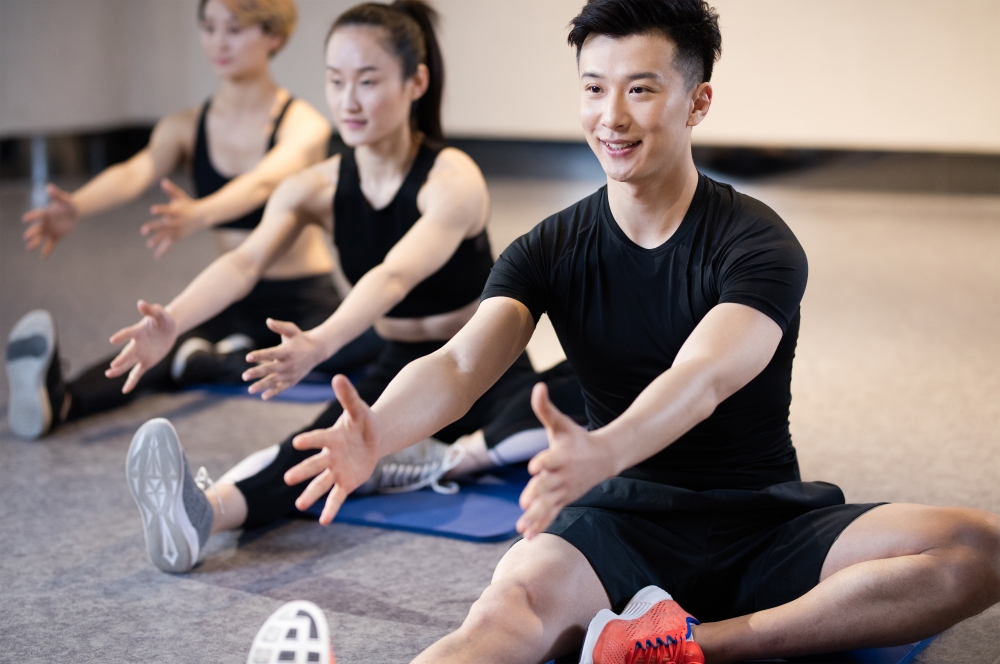
Once upon a time, [no squat, no ass] [N benefits of squat] such content flooded the network. Everyone, whether in order to lose weight, shape, or even to gain proud strength, etc., are actively involved in the squat army. From fitness coaches to weight loss experts, all highly recommend squat, regard it as a magic weapon for fitness, strong body weapon!
Then the question arises, is squat really a sport that benefits but does no harm?
Is what squatting?
There are as many as 27 kinds of squats mentioned in the article < > on LiftingRevolution website. We mainly discuss: Quarter Squat, Parallel Squat and Deep Squat & full depth, which are three representative types of knee flexion angles.
Quarter Squat is 1/4 of the whole range of knee joint, which is also what we usually call squat.
Parallel Squat refers to taking the ground as the reference level, with the thighs parallel to the ground and the knee flexion angle slightly greater than 90 degrees.
Deep Squat & full depth requires the trainer to keep the waist and back straight, the buttocks as far back as possible, the hip joint as low as possible below the knee joint, and the knee joint should not exceed the toes. Squat can not only directly exercise quadriceps femoris, gluteus maximus and hamstring muscles, but also help the training of erector spinae, piriformis, adductor maximus, gluteus medius, gluteus minimus and calf muscles.

Which is the most efficient squat exercise?
Knee joint is the largest and most complicated joint in human body, and it is also the most important but vulnerable joint in squat exercise. Why do you say so, this should start with the anatomy and biomechanics of knee joint.
The knee joint is composed of femoral condyle, tibial plateau, patella, meniscus and corresponding synovium (sac), ligament, muscle, etc. The injury of any component of the knee joint will more or less affect the stability of the knee joint.
When the flexion angle of the knee joint is between 15 and 30 degrees, the stress on the anterior cruciate ligament (ACL) of the knee joint is the greatest.
From the perspective of maintaining balance, in order to resist quadriceps femoris, if there is no strong posterior thigh muscle (hamstring muscle), the stress on ACL cannot be effectively reduced, and improper training will cause knee joint damage and lumbago instead.
Parallel Squat also undergoes the process of knee joint flexion of 15 ~ 30 degrees, but the stress on ACL decreases greatly when reaching 60 degrees.
Moreover, hamstring exerts maximum efficiency and reduces the pressure on patellofemoral joint surface. When the knee joint is flexed, the activity of quadriceps femoris, hamstring muscle and gastrocnemius muscle increases, and the coordinated contraction of these muscles ensures that the ligament and cartilage of the knee joint are relatively stable and the possible damage is relatively small.
Parallel squat not only exercises quadriceps femoris, but also has a lot of benefits to the muscles of the posterior thigh group and is relatively safe to the knee joint through its large-scale exercise, so it is a squat exercise with the highest efficiency.
However, Deep Squat & full depth requires relatively high requirements, requiring the trainer’s hip, knee and ankle joints to have certain flexibility, otherwise not only the knee joint but also the waist may be damaged.
Why is squatting easy to get hurt?
Because when squatting to the maximum range, the tibial plateau moves backward relative to the femoral condyle, and the stress of the posterior cruciate ligament increases correspondingly at this time. If there is no strong quadriceps femoris to ensure, injury will inevitably occur. At the same time, knee flexion, patella and tibia pressure and shear force all increase; When the knee joint is stretched, it decreases.
When the knee flexion reaches the maximum angle, the above pressure and shear force reach the peak value. This is an important reason why squat may cause cartilage injury on patellofemoral articular surface and tibial plateau.
However, once cartilage is damaged, it cannot be repaired because there is no blood supply.
Repeated cartilage damage causes the cartilage surface to be no longer smooth and pressure-resistant, Not only can’t the original cushion, pad and lubrication of cartilage be used, but the rough cartilage surface and even the exposed subcartilage bone surface after falling off will also wear out other normal tissues in the joint. This is also the reason why many people who squat too much are more prone to knee degeneration and osteoarthritis.
In addition, when squatting, if the pelvis and trunk are not well controlled, when squatting to the lowest point, lumbar flexion and pelvic retroversion will also occur. At this time, hamstring muscle, adductor maximus and even gluteus maximus will be relatively relaxed, the training effect will decrease, and the pressure on the cartilage surface of the knee joint will be further increased.
Therefore, compared with the high efficiency and low risk of parallel squats, squats are not the best choice.

Squat, YES or NO?
Therefore, for people without knee joint injuries, if the training purpose is only for health, increasing joint stability, avoiding joint injuries and delaying joint degeneration, parallel squats are more recommended than deep squats, because with deep squats, potential injuries to muscles, ligaments, especially cartilage, may increase.
Moreover, the correct squat movement requires relatively high requirements. If ordinary people do not master it well, the chance of causing accidental injuries in sports will also increase relatively.
Of course, we do not deny the benefits of squat exercise (including parallel squat and deep squat), such as the strength and shape of gluteus maximus, which everyone pays more attention to, and correct training will also enhance the stability of knee joint.
For those who take body building as their training goal, or athletes with special functional needs such as heavy competitive events, squat training can also be carried out. However, whether it is parallel squat or squat, professional and scientific guidance must be provided.
First of all, it is necessary to evaluate the functional state and evaluate whether squat training can be carried out. Those who have problems such as insufficient flexibility of lower limbs, cartilage injury of knee joint and insufficient stability of spine cannot directly carry out squat training.
Secondly, we must do standard movements as much as possible during training. Make full warm-up preparations before exercise. Try to include some drafting, jumping, jogging and other flexibility training. When squatting, if you find problems such as heel off the ground, body leaning forward or shaking, and squatting depth is not enough, it indicates that the body may have problems in ankle joint mobility, balance and coordination ability, and core muscle strength, which need to be solved before squatting.
Squat training must follow the principle of gradual and orderly progress, and must not exercise in a large amount of impact training.
It is not advisable to emphasize the benefits of squats while ignoring the potential sports injuries. Sports injuries always occur inadvertently. Instead of waiting for the injury to be remedied, it is better to know whether you must do this exercise and how to do it correctly. After all, there are still many ways to train lower limb muscles.
Squat is risky, please be careful in practice!
Responsible Editor: Chuyang
This article is exclusively authorized by the author to be used by Clove Garden and refuses to reprint in any other form.
